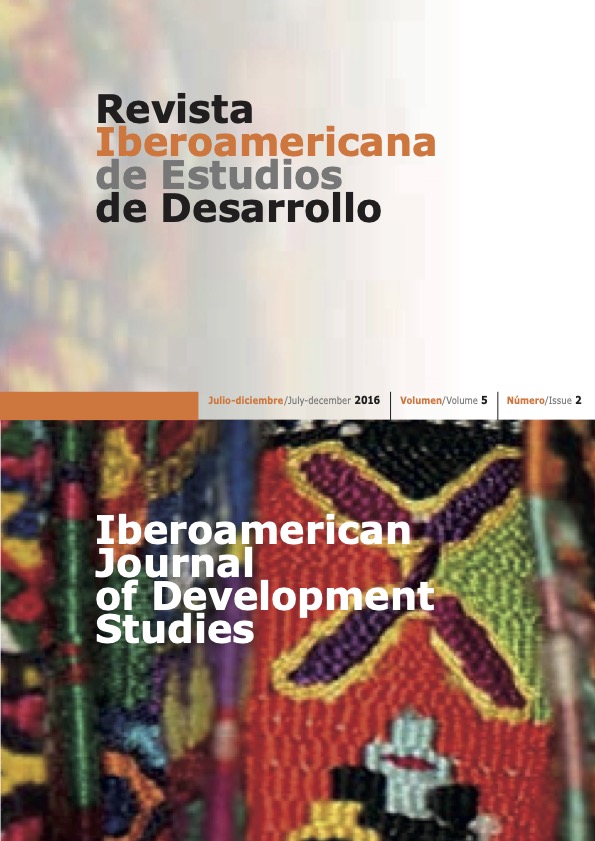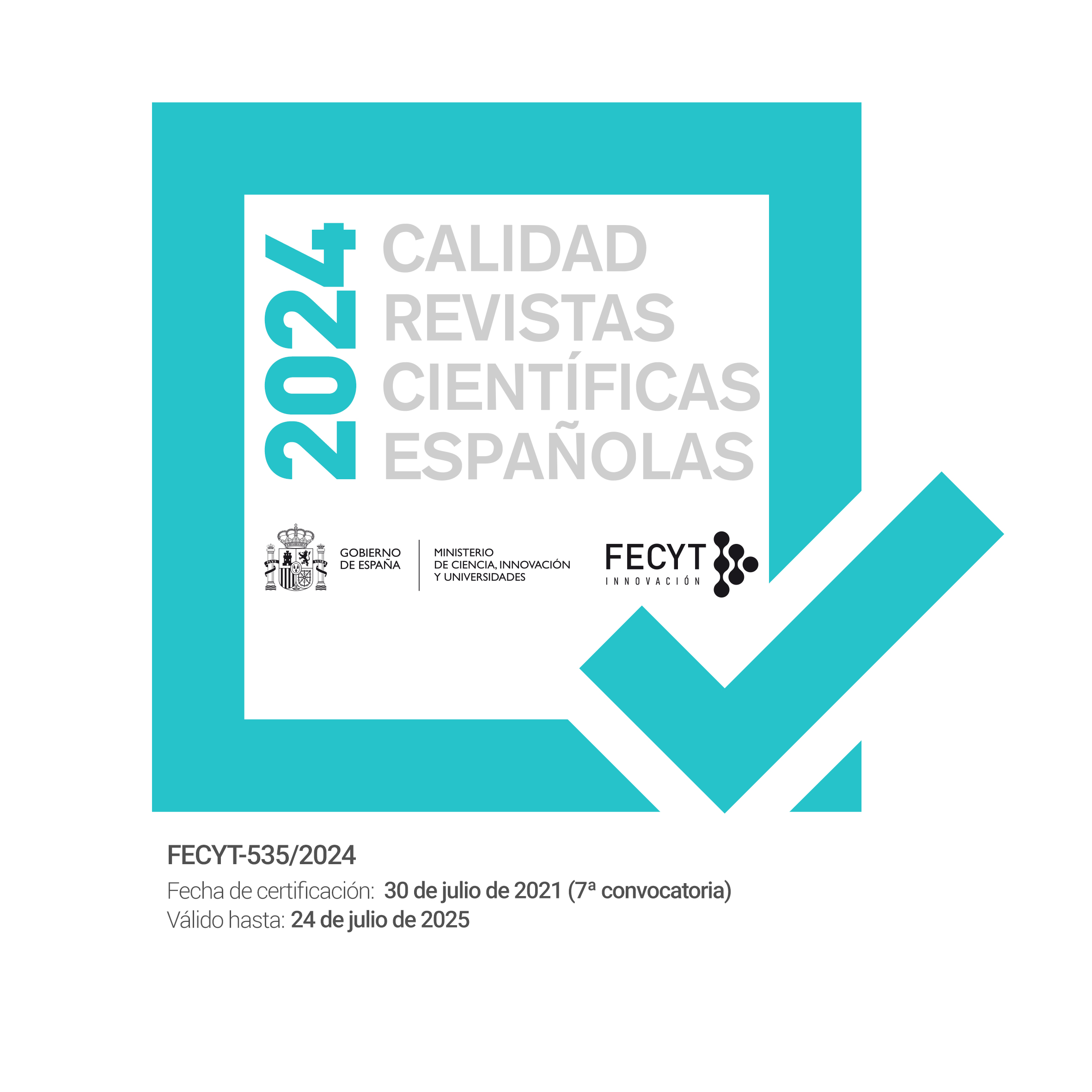Recursos naturales y desarrollo en África subsahariana: el caso de Zambia después de la privatización de las minas
DOI:
https://doi.org/10.26754/ojs_ried/ijds.187Palabras clave:
Recurso natural, sector minero, países en desarrollo, políticas públicas, cooperación internacionalResumen
Se ha generado en los últimos veinticinco años una abundante bibliografía académica o sobre la llamada «maldición del recurso natural» (natural resource curse), que supone consecuencias negativas (económicas y políticas) de explotación de ese tipo de recurso, en particular en los países menos desarrollados. Se han elaborado también propuestas de política y gestión pública para contrarrestar esa «maldición» y hacer que el impacto del recurso sea favorable en países, como los africanos, que no tienen muchas otras oportunidades de impulsar la financiación pública y el desarrollo nacional. Pero esas propuestas políticas normativas no son de fácil implementación en contextos institucionales frágiles. A este respecto, el trabajo examina la evolución y las políticas públicas de un país africano pobre con recursos mineros (Zambia), en particular después de la privatización de las compañías mineras al final del pasado siglo.
Descargas
Referencias
AFRICAN UNION (2009). Africa Mining Vision.
ALVES AC (2011). The Zambia-China Cooperation Zone at a Crossroads: What Now? Policy Briefing 41. China in Africa Project. South African Institute of International Affairs (SAIIA).
BLOOM D, SACHS JD (1998). Geography, Demography, and Economic Growth in Africa. Brookings Papers on Economic Activity 2(1998):207-295.
BRUNNSCHWEILER CN (2008). Cursing the blessings? Natural resource abundance, institutions, and economic growth. World Development 36(3):399-419.
CAMPBELL B (ed.) (2003). Factoring in Governance is not enough. Mining Codes in Africa, Policy Reform and Corporate Responsibility. Minerals & Energy, Raw Materials Report, vol. 18 3, septiembre de 2003.
CAMPOS A, CARRILLO M (eds.) (2008). El precio oculto de la tierra. Madrid: Icaria.
CENTRAL STATISTICAL OFFICE (2013). 2012 Zambia Labour Force Survey Report.
CENTRAL STATISTICAL OFFICE ZAMBIA (2014). Living Conditions Monitoring Survey 2010.
CHEESEMAN N, LARMER M (2015). Ethnopopulism in Africa: opposition mobilization in diverse and unequal societies. Democratization, vol. 22 1:22-50.
COLLIER P. (2007). Laws and Codes for the «Resource Curse». Oxford University, septiembre de 2007.
COLLIER P (2014). Zambia: a time for big opportunities and tough decisions. En: C Adam, P Collier y M Gondwe (eds.). Zambia: Building Prosperity from Resource Wealth. Oxford University Press, pp. 15-29.
COLLIER P, CHAUVET L (2009). Elections and Economic Policy in Developing Countries. Economic Policy, vol. 24 59:509-550.
COLLIER P, GUNNING JW (1999). Why Has Africa Grown Slowly? The Journal of Economic Perspectives, vol. 13 3:3-22.
COLLIER P, VAN DER PLOEG F, VENABLES AJ (2009). Managing Resource Revenues in Developing Countries. OxCarre Research Paper 22.
CONRAD R (2012). Zambia’s Mineral Fiscal Regime. International Growth Centre. Working Paper 12/0653, septiembre de 2012.
CORDEN WM, NEARY JP (1982). Booming Sector and de-Industrialization in a Small Open Economy. The Economic Journal, vol. 92 368:825-848.
DE KEMP A, FAUST J, LEIDERER S (2012). Between High Expectations and Reality: An Evaluation of Budget Support in Zambia (2005-2010). Swedish International Development Cooperation Agency (AIDS).
DUNNING T (2008). Crude Democracy: Natural Resource Wealth and Political Regimes. Nueva York: Cambridge University Press.
ELLIS K, SINGH R, MUSONDA C (2010). Assessing the Economic Impact of Competition: Findings from Zambia. Londres: Overseas Development Institute.
GARCÍA-LUENGOS J (2014). La explotación de los recursos naturales en África subsahariana y las industrias extractivas. Redes.
GELB A et al. (1988). Oil Windfalls: Blessing or Curse? Nueva York: Oxford University Press for the World Bank.
GONDWE M, PAMU EM (2014). Growth strategies for Zambia: harnessing natural resources wealth for sustainable growth Mulenga. En: C Adam, P Collier y M Gondwe (eds.). Zambia: Building Prosperity from Resource Wealth. Oxford University Press, pp. 3-14.
GOVERNMENT OF ZAMBIA (s. f.). Budget addresses 2008-2015.
GOVERNMENT OF ZAMBIA (2014). Revised Sixth National Development Plan 2013-2016.
GRINDLE, M (2004). Good Enough Governance: Poverty Reduction and Reform in Developing Countries. Governance: An International Journal of Policy and Administration 17(4):525-548.
HAGLUND D (2010). Policy effectiveness and China’s investment in the Zambian mining sector. Policy Briefing 19. China in Africa Project. South African Institute of International Affairs (SAIIA).
HUMPHREYS M, SACHS J, STIGLITZ JE (eds.) (2007). Escaping the Resource Curse. Nueva York: Columbia University Press.
HOOPER R et al. (2008). Evaluation of DFID country programmes: Zambia. DFID Evaluation Report EV689.
INTERNATIONAL MONETARY FUND (2011). Investing in Public Investment: An Index of Public Investment Efficiency.
INTERNATIONAL MONETARY FUND (2012). Fiscal Regimes for Extractive Industries: Design and Implementation.
INTERNATIONAL MONETARY FUND (2014). Revenue Administration: Administering Revenues from Natural Resources ‒ A Short Primer.
INTERNATIONAL ORGANIZING COMMITTEE FOR THE WORLD MINING CONGRESSES (2014). World Mining Data.
KARL TL (1997). The Paradox of Plenty. Oil Booms and Petro States. Berkeley: University of California Press.
MASON NM, JAYNE TS, MOFYA-MUKUKA R (2013). Zambia’s input subsidy programs. Agricultural Economics 44(2013):613-628.
NATURAL RESOURCES GOVERNANCE INSTITUTE (2009). Carta de los Recursos Naturales.
OCDE (2012). International Drivers of Corruption: A Tool for Analysis.
OCDE (2014). Report to G20 Development Working Group on the Impact of BEPS in Low Income Countries.
PROGRAMA DE NACIONES UNIDAS PARA EL DESARROLLO (PNUD). Informe IDH 2014.
ROSS ML (1999). The political economy of the resource curse. World Politics 51(2):297-322.
SACHS JD, WARNER AM (1995). Natural resource abundance and economic growth. NBER Working Papers 5398.
SÁNCHEZ-ALBAVERA F, ORTIZ G, MOUSSA N (1998). Panorama minero de América Latina: la inversión en la década de los noventa. Cepal, octubre.
SARDANIS A (2003). Another Side of the Coin. Northern Rhodesia’s Final Years and Zambia’s nationhood. Londres: IB Tauris.
TRANSPARENCY INTERNATIONAL-CHR. MICHELSEN INSTITUTE, U4 EXPERT ANSWER (2014). Zambia: Overview of Corruption and Anti-corruption.
TRANSPARENCY INTERNATIONAL ZAMBIA (2012). Contribution to the Conference of the States Parties to the United Nations Convention against Corruption (UNCAC), 5 de junio.
UNIÓN AFRICANA(2009). African Mining Vision.
UNITED NATIONS CONFERENCE ON TRADE AND DEVELOPMENT (2007). Elimination of Trims: The Experience of Selected Developing Countries.
VAN DER PLOEG F, POELHEKKE F (2008). Volatility and the Natural Resource Curse. OxCarre Research Paper 2008-03.
WORLD BANK (1992). Strategy for Africa Mining. WB Technical Paper no 182, agosto.
WORLD BANK (1996). A Mining Strategy for Latin America and the Caribbean. WB Technical Paper no 345, diciembre.
ZAMBIA EXTRACTIVE INDUSTRIES TRANSPARENCY INITIATIVE (ZEITI) (2014). Reconciliation report for the year 2013, diciembre. Auditor: Moore & Stephens.
ZAMBIA INSTITUTE FOR POLICY ANALYSIS AND RESEARCH-ZIPAR (2014). Optimizing study for core road network planning to link Zambia. Working Paper 19, febrero
Descargas
Publicado
Número
Sección
Licencia
Derechos de autor 2016 Rafael Aguirre-Unceta

Esta obra está bajo una licencia internacional Creative Commons Atribución-NoComercial-SinDerivadas 4.0.






